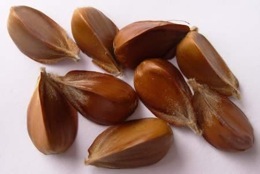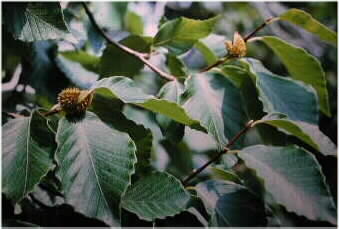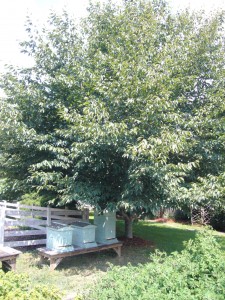Fagus grandifolia: The All-American Beech
Tree trivia: Beechnut chewing gum had nothing to do with the Beech tree or the seeds it produces. It was, however, the name and logo of a company that made candy, and was my favorite chewing gum as a kid.
The American Beech (Fagus grandifolia) is found from Nova Scotia, southwest to northern Florida (down to Alachua County) and over to the Mississippi River and into eastern Texas, eastern oklahoma, and northwest Arkansas. Paleobiologists tell us that at one time the beech was found through most of North America and could grow there now. But, because of the ice ages they disappeared from the western two-thirds of the continent save for some in the mountains of Northeastern Mexico. Environmentally beech is found with maples, birches, the basswood, black cherry, southern magnolia, eastern white pine, red spruce, several hickories and oaks.
Beech trees begin producing seeds around 40-years old, and by 60 can be producing huge amounts. They don’t produce every year and can cycle anywhere from two to eight years. In northern and central states the beech flowers in late April or early may when the new leaves are about one-third grown. They are quite vulnerable to spring frosts. The seeds ripen between September and November. Two to four nuts are usually found in one bur. Heavy frost can cause the bur to open and drop its seeds. There are about 1,600 seeds to a pound.
Beech seeds, also called mast, are sought after by a large variety of birds and mammals, including mice, squirrels, chipmunks, black bear, deer, foxes, ruffed grouse, ducks, and bluejays. Beech wood is used for flooring, furniture, turned products, veneer, plywood, railroad ties, baskets, pulp, charcoal, rough lumber, shoe lasts, buttons, bowls and barrels for aging beer. It is also preferred by those with wood burning stoves because of its high density and good burning qualities. Creosote made from beech wood is used internally and externally as a medicine for people and animals.
From the human point of view, the American Beech provides quite a few edibles. The inner bark is edible, young leaves are quite tasty while they are soft. The sweet seeds are very edible and can be crushed into a butter. The nuts have a low amount of fagin which is slightly toxic and is found in the skin of the kernel (roasting allows that skin to be easily rubbed off.) The European beech, F. sylvatica, has more fagin and has to be used more carefully. Beechnut oil does not have any fagin and was used in Europe for centuries for cooking (and as a hair tonic.) Seeds have been crushed, boiled, and the nourishing liquid drank. They were also ground up and added to cornmeal and berries to make a bread. Beech sawdust has also been mixed with flour to extend it when making bread in times of scarcity. Raw nuts should not be eaten to excess.
Fagus grandifolia means “edible large leaves. “Fagus” comes from the Greek verb Fagito, which means to eat and was the name of the European beech, F. sylvatica (edible of the woods.) The species name is Latin. To go back a little further “fagito” came from Akkadian “paglu” meaning strong.
Green Deane’s “Itemized” Plant Profile
IDENTIFICATION:
Leaves alternate, simple, elliptical to oblong-ovate, 2 1/2 to 5 1/2 inches long, pinnately-veined, 11-14 pairs of veins, with each vein ending in a sharp distinct tooth, shiny green above, very waxy and smooth, slightly paler below. Male flowers borne on globose heads hanging from a slender 1 inch stalk, female flowers borne on shorter spikes, appearing just after leaves in the spring. Nuts are irregularly triangular, shiny brown, found in pairs within a woody husk covered with recurved spines,
TIME OF YEAR:
Nuts ripen in fall, young leaves in spring while tender.
ENVIRONMENT:
Old forests, neither dry nor wet, found with maples, birches and oaks.
METHOD OF PREPARATION:
Inner bark is edible, young leaves edible, mature seeds (best to remove their brown covering.) Can be roasted and or made into a nut butter. The oil is good for cooking.




